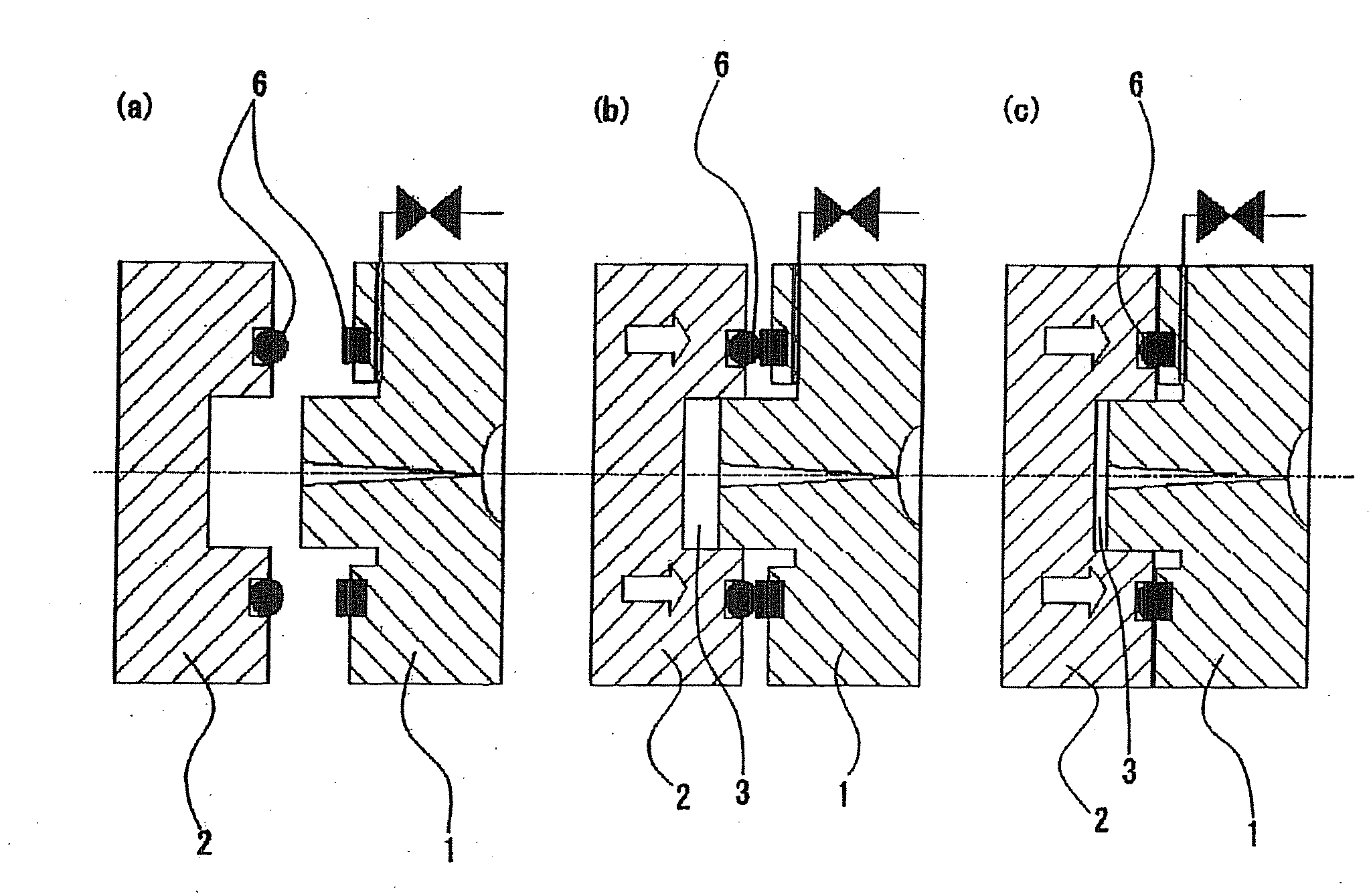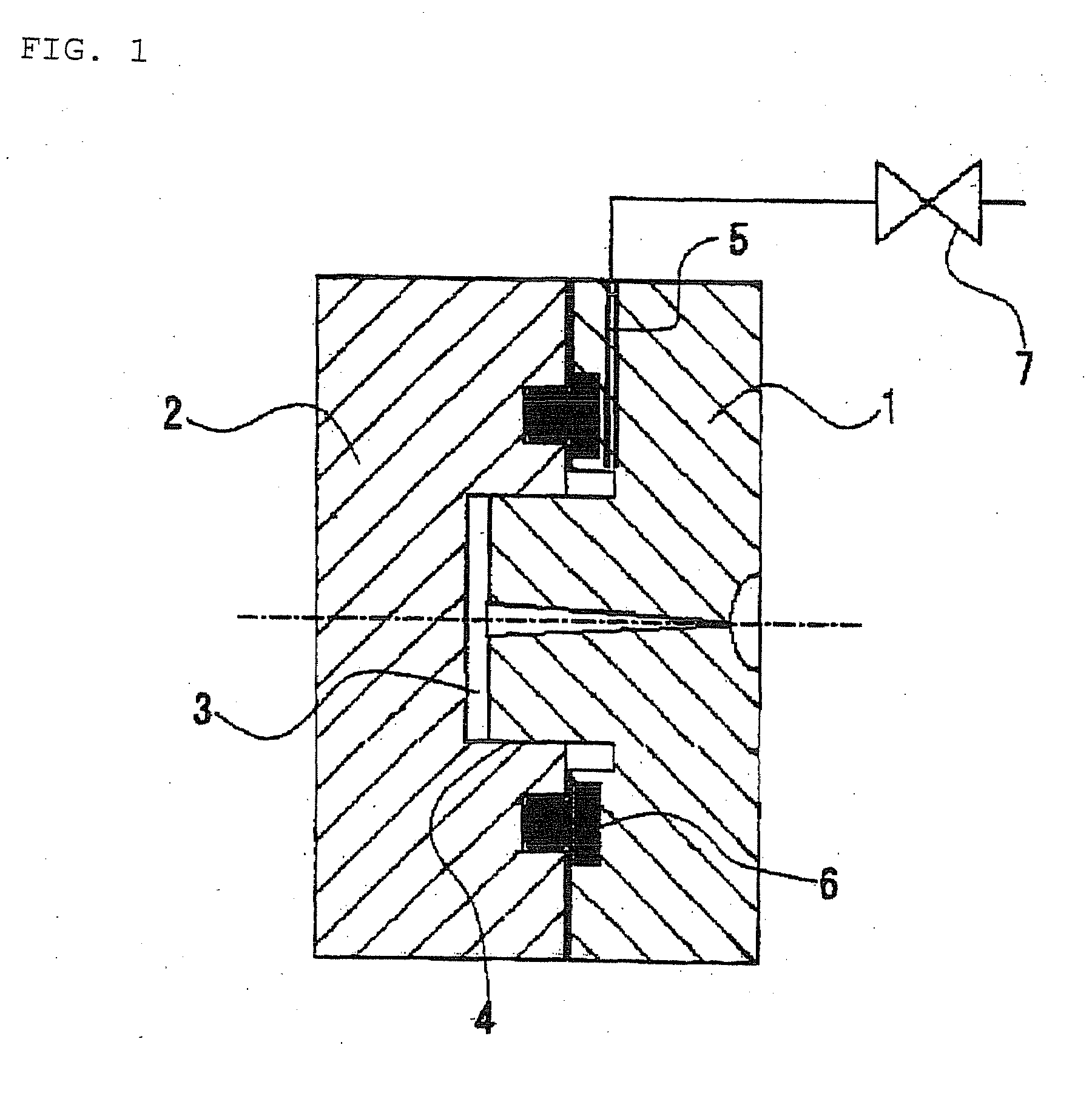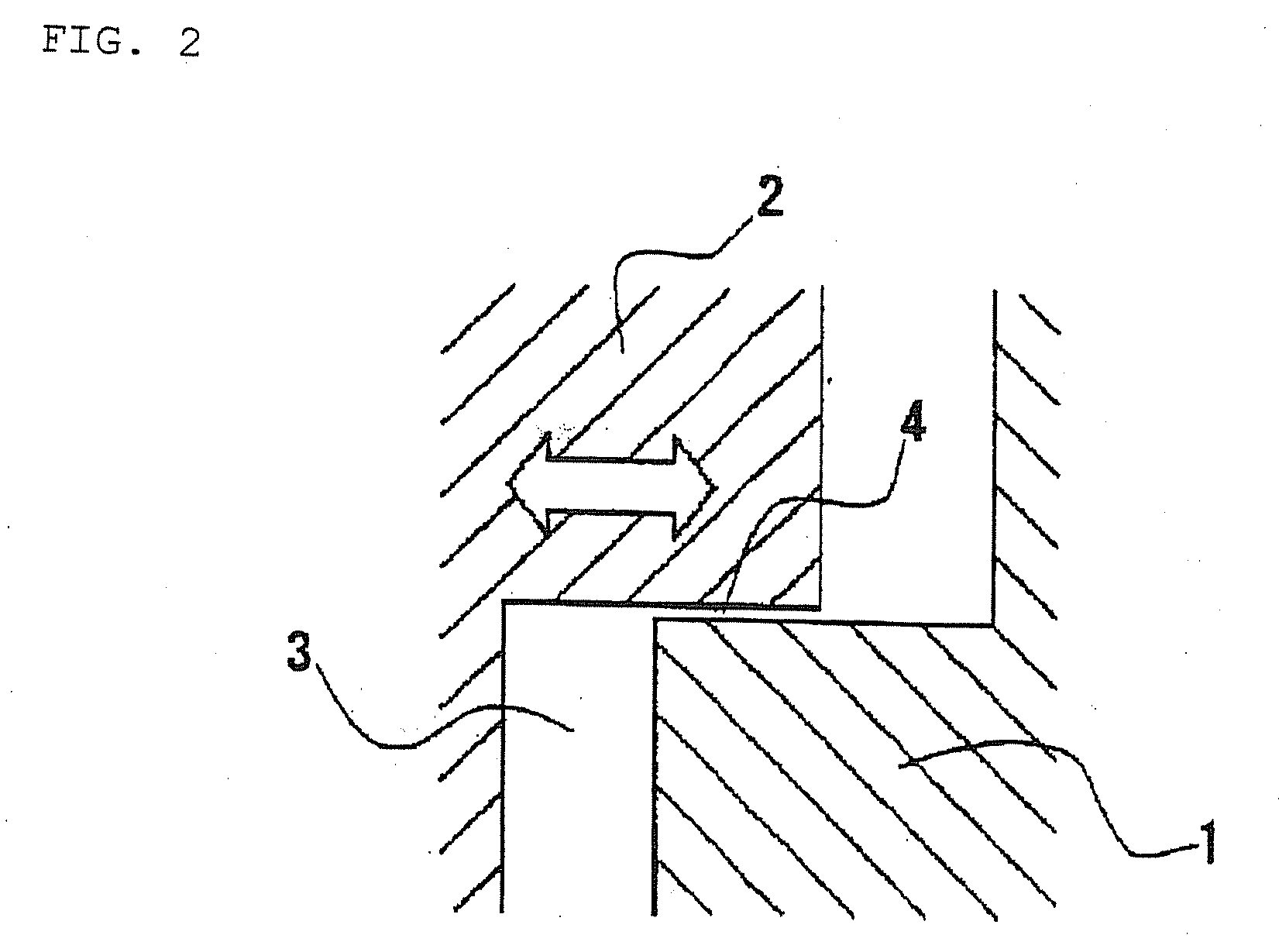Expansion Injection Molding Process And Mold For Expansion Injection Molding
a technology of expansion injection molding and expansion injection molding, which is applied in the field of expansion injection molding process and mold for expansion injection molding, can solve the problems of not being able to be used as practical products that require good appearance, the external surface of expansion molded articles will have a great amount of appearance defect, swirl marks, etc., and achieves short molding cycle, prevent swirl marks on the surface of molded articles, and good appearance
- Summary
- Abstract
- Description
- Claims
- Application Information
AI Technical Summary
Benefits of technology
Problems solved by technology
Method used
Image
Examples
example 1
[0102]A mold shown in FIG. 1, which has a cavity size of 800×500 mm, was prepared. This mold has a structure such that the thickness of the cavity can be changed by the thickness of an insert of its gas-sealed part. Through fixation of an insert having a predetermined thickness to the movable mold across a rubber O-ring having a circular cross section, the mold was adjusted to have a cavity thickness of 1.5 mm when the mold is in a completely closed state.
[0103]The surrounding of the cavity of this mold forms a shear edge structure. In the outer periphery of the base end of the convex part in the fixed mold, a looped gas passageway having a width of 5 mm and a height of 15 mm is provided, where the width is defined by the gap between the convex part and the insert and the height is defined by the thickness of the insert. This gas passageway is interconnected to the cavity through the gap of the shear edge.
[0104]The arrangement of an O-ring on the movable mold made it possible to est...
reference example 2
[0112]The supply pressure of the expansion agent and the gas pressure in the cavity were equal to those used in Example 1. The pressure in the cavity was maintained also after the completion of injection of a molten resin into the cavity. Release of the pressure was started during the step of enlarging the cavity volume by moving the movable mold. Some pockmarks and defective expansion were generated in the surface of the expansion molded article because the timing of starting the gas discharge was later than a preferable range. It, however, was confirmed that there were no swirl marks. The molding conditions and the results derived therefrom are shown in Table 1.
TABLE 1ComparativeReferenceReferenceExample 1example 1example 1example 2ResinPPPPPPPPExpansion agentCO2 GasCO2 GasCO2 GasCO2 GasExpansion agent1.51.51.51.5Pressure (MPa)Gas Pressure in0.30.00.90.2Cavity (MPa)Timing of GasCompletionCompletionCompletionDuringDischargingofofofExpansionInjectionInjectionInjectionStepResin Charg...
example 2
[0113]Injection molding was carried out in the same manner as Example 1 except that, as an expansion agent, sodium hydrogencarbonate and a citric acid-based thermal decomposition type chemical expansion agent were used. The chemical expansion agent was supplied in such a manner that it was added in the form of masterbatch in an amount of 3 parts to the material and then mixed.
[0114]Into a cavity where the pressure was increased to about 0.2 MPa by mold closure of the molding machine, a molten polypropylene resin was injected, the resin having been prepared by melting and dissolving carbon dioxide generated from a chemical expansion agent decomposed on heating. At the time when the injection was completed, the gas pressure in the cavity was released and the movable mold was moved so that the volume of the cavity would be enlarged in 0.5 seconds from the completion of the injection. Thus, an expansion molded article having no swirl marks in its surface was obtained. The evenness of th...
PUM
| Property | Measurement | Unit |
|---|---|---|
| gas pressure | aaaaa | aaaaa |
| cavity thickness | aaaaa | aaaaa |
| thickness | aaaaa | aaaaa |
Abstract
Description
Claims
Application Information
 Login to View More
Login to View More - R&D
- Intellectual Property
- Life Sciences
- Materials
- Tech Scout
- Unparalleled Data Quality
- Higher Quality Content
- 60% Fewer Hallucinations
Browse by: Latest US Patents, China's latest patents, Technical Efficacy Thesaurus, Application Domain, Technology Topic, Popular Technical Reports.
© 2025 PatSnap. All rights reserved.Legal|Privacy policy|Modern Slavery Act Transparency Statement|Sitemap|About US| Contact US: help@patsnap.com



